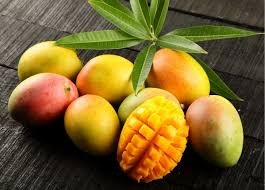Mexico Leads as the Top Mango Exporting Country
Introduction Mexico has established itself as the leading mango exporter globally, reaching an export value of $575.36 million in 2023. This achievement underscores the country’s significant role in the international mango market.
Worldwide Mango Exports Global mango exports in 2023 amounted to $1.51 billion, highlighting the fruit’s growing popularity. Mexico’s contribution of $575.36 million reflects its substantial market share, driven by the increasing global demand for mangoes. This growth is supported by advancements in infrastructure and agricultural practices, ensuring a steady supply to meet international preferences.
Mexico’s Dominance in Mango Exports In 2023, Mexico solidified its position as the world’s largest mango exporter, with its exports accounting for 38.08% of the global market. This represents a 5.09% increase from the previous year, showcasing Mexico’s continued dominance in the sector.
Factors Contributing to Mexico’s Success Several key factors contribute to Mexico’s success in mango exports:
- Geographical Advantage: Mexico’s favorable climate and fertile soil provide ideal conditions for high-quality mango cultivation.
- Infrastructure and Logistics: Improved transportation infrastructure facilitates efficient export processes.
- Market Diversification: Mexico strategically caters to various global markets, reducing reliance on any single market.
- Government Support: Policies and initiatives supporting mango farming have spurred industry growth.
Global Impact and Market Share Mexico’s prominent role in the global mango market is evident from its substantial export value. Renowned for the quality and variety of its mangoes, Mexico meets diverse consumer demands worldwide, reinforcing its leading position.
Future Trends and Prospects The future of Mexico’s mango export sector looks promising, with expected growth driven by innovations in farming practices and sustainable agriculture techniques. Continued market expansion efforts are likely to further bolster Mexico’s leadership in the global mango industry.

Why This News is Important
Economic Significance Understanding the dynamics of global mango exports, especially Mexico’s leading role, is crucial for students preparing for exams in economics, international trade, and agriculture. This knowledge highlights the economic impact of agricultural exports on a country’s economy.
Exam Relevance For exams related to banking, civil services, and competitive government exams, awareness of global trade patterns and key exporting countries is vital. Questions on international markets and export statistics frequently appear in such exams.
Agricultural Insights For students focusing on agricultural studies, this news provides insights into successful agricultural practices and the importance of government support in boosting agricultural exports. It emphasizes the need for improved infrastructure and strategic market diversification.
Geographical Context Geography students can benefit from understanding the climatic and geographical factors that make Mexico an ideal location for mango cultivation. This knowledge is pertinent for questions related to agricultural geography and climatic influences on crop production.
Policy Implications The role of government policies in supporting and sustaining agricultural industries is a key point for students studying public administration and policy-making. It underscores how strategic interventions can enhance a country’s competitive edge in global markets.
Historical Context
Background of Global Mango Trade Mangoes have been a significant agricultural commodity for centuries, originating from South Asia and spreading globally through trade routes. The fruit’s popularity has led to the establishment of large-scale mango farming in various tropical and subtropical regions.
Mexico’s Agricultural Evolution Mexico has a long history of mango cultivation, with the fruit being a staple in its agricultural sector. Over the years, advancements in farming techniques and infrastructure have positioned Mexico as a key player in the global mango market.
Government Initiatives Mexican government initiatives aimed at supporting agriculture date back to the mid-20th century. Policies focusing on improving agricultural infrastructure, providing financial aid to farmers, and promoting exports have been instrumental in boosting the mango industry.
Global Trade Agreements International trade agreements and collaborations have played a crucial role in expanding Mexico’s mango export markets. These agreements have facilitated easier access to international markets, contributing to the country’s export growth.
Key Takeaways from “Mexico Leads as the Top Mango Exporting Country”
| Serial Number | Key Takeaway |
|---|---|
| 1 | Mexico is the world’s largest mango exporter with $575.36 million in exports in 2023. |
| 2 | Global mango exports in 2023 totaled $1.51 billion, with Mexico contributing 38.08% of the market share. |
| 3 | Factors like geographical advantage, improved infrastructure, market diversification, and government support drive Mexico’s success. |
| 4 | Mexico’s mangoes are renowned for their quality and variety, meeting diverse consumer preferences worldwide. |
| 5 | Future growth in Mexico’s mango export sector is expected through innovations in farming practices and sustainable agriculture techniques. |
Important FAQs for Students from this News
1. Why is Mexico the leading exporter of mangoes?
Mexico’s geographical advantage, favorable climate, improved infrastructure, market diversification, and government support contribute to its leading position in mango exports.
2. What is the global export value of mangoes in 2023?
The global export value of mangoes in 2023 was $1.51 billion.
3. How much did Mexico export in terms of value in 2023?
Mexico exported mangoes worth $575.36 million in 2023.
4. What percentage of the global mango market does Mexico hold?
Mexico holds 38.08% of the global mango market.
5. What are the future prospects for Mexico’s mango export industry?
The future looks promising with expected growth driven by innovations in farming practices and sustainable agriculture techniques.
Some Important Current Affairs Links


















